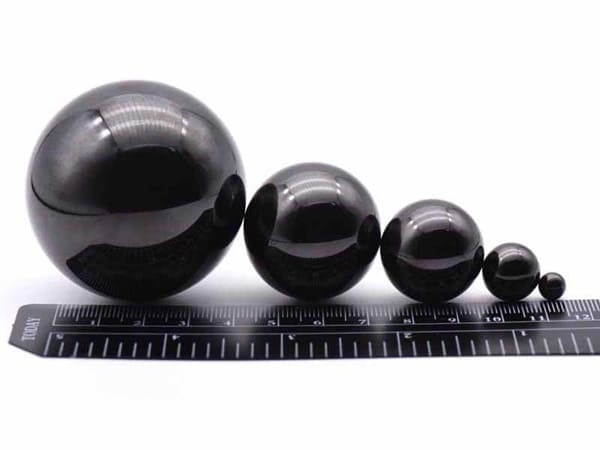Diverse Molding Technologies for Silicon Nitride Ceramic Balls: Principles and Future Applications
Silicon nitride ceramic balls are renowned for their exceptional mechanical properties, high-temperature resistance, and corrosion resistance. These characteristics make them vital components across various industries, including aerospace, electronics, and mechanical manufacturing. Achieving high-quality Si₃N₄ ceramic balls relies heavily on advanced forming techniques. In this blog, we will explore six commonly used molding methods—compression molding, isostatic pressing, injection molding, rolling, drop casting, spray forming, and additive manufacturing (3D printing)—delving into their principles, processes, and optimization strategies. This comprehensive overview aims to shed light on the latest developments in ceramic ball manufacturing technology.
At Advanced Ceramics Hub, we specialize in high-quality silicon nitride ceramic products with a variety of forms and specifications, ensuring optimal performance for industrial and scientific applications.

1. Compression Molding: Refining Traditional Techniques
Compression molding involves applying external pressure to compact ceramic powders into spherical preforms. The key lies in designing molds that evenly distribute pressure and facilitate powder flow, ensuring uniform density and sphericity. Techniques such as pre-pressing and main pressing, combined with vibration and release agents, help prevent defects like porosity and cracking, leading to stronger green bodies. Optimizing parameters such as pressure, temperature, and holding time allows adaptation to different powder particle sizes and compositions. This mature process is cost-effective and suitable for large-scale production of high-precision ceramic balls.
2. Isostatic Pressing: Achieving Uniform Internal Density
Isostatic pressing applies high-pressure fluid media to transmit force uniformly in all directions, overcoming the density inconsistencies typical of traditional methods. This isotropic pressure yields denser ceramics with superior mechanical properties. The process involves high-pressure vessels and precise control of pressure application and holding time, optimizing microstructure development. Suitable for complex geometries, this technique meets the stringent demands of high-performance ceramic balls used in demanding applications.
3. Injection Molding: Efficient and Precise Complex Structure Fabrication
Injection molding combines powder with binders to produce a highly flowable feedstock, which is injected into heated molds with high precision. Its main advantage is the ability to produce complex geometries with micron-level accuracy. Critical equipment includes high-performance injection machines and temperature control systems. Adjusting parameters like injection pressure and speed helps avoid defects such as voids or shrinkage. This method is especially beneficial for small batches and diversified products, pushing ceramic balls toward smarter, multifunctional applications.
4. Rolling Molding: An Innovative Molding Approach Without Traditional Dies
Rolling molding employs rotational equipment to deposit powder against the inner surface of a mold, using centrifugal force to form spherical shapes. The process eliminates the need for complex molds, enhancing efficiency for mass production of high-purity ceramic balls. Controlling rotation speed and powder feed rate is crucial to ensure uniform density and sphericity. Ongoing optimization of equipment parameters promises further improvements in quality and productivity.
5. Drop Casting: Precision at the Microscale
Drop casting involves controlling liquid droplets to form tiny ceramic spheres via solidification and curing. Ideal for manufacturing micro-sized balls (less than 5mm in diameter), it’s widely used in micro-mechanical systems and precision instruments. Key equipment includes micro-nozzles and multi-zone curing systems. Precise regulation of droplet size and curing speed ensures consistent shape and dimensions, representing a future-oriented approach in ceramic manufacturing.
6. Spray Forming and 3D Printing: Cutting-Edge Smart Manufacturing
Spray forming utilizes high-velocity powder jets combined with aerodynamic control to rapidly produce complex structures, offering high efficiency and design flexibility. Modern equipment integrates multi-nozzle systems with intelligent controls for diverse design implementations.
3D printing, as an additive manufacturing technology, builds ceramic components layer-by-layer, enabling precise fabrication of complex geometries. Suitable for small batches and highly customized products, advanced printers equipped with high-precision nozzles and real-time monitoring ensure consistent quality. Both methods are pushing the boundaries of what’s possible in ceramic ball production.
Conclusion
As materials science and manufacturing technology evolve, the variety and intelligence of Si₃N₄ ceramic ball forming techniques continue to expand. Future developments will likely integrate CNC automation, digital management, and novel materials, driving higher quality, more intricate structures, and improved efficiency. These advancements will underpin industrial upgrades and support high-end applications, ensuring silicon nitride ceramic balls remain at the forefront of high-performance engineering solutions.
For top-quality ceramic products, Advanced Ceramics Hub provides tailored solutions and precision machining techniques for various applications.
Looking for premium silicon nitride (Si3N4) ceramic products? Contact us today!
